I really like camping. At its most basic level, it’s a cheap way to spend a few days in the great outdoors, take in the countryside, see the sunset and toast a few marshmallows. But if you really want to take it to the extreme, it can become a way to take your traditional indoor comforts, outside.
To do this, most people might head for a bougie tent with various compartments for eating and sleeping. Or, you might elect to invest in some form of van that can be converted into a home on wheels.
But, if you’re feeling fancy yet still want to stay in touch with nature, then a roof top tent adds some of the convenience of a camper with the simple joy of spending a night under canvas. On paper, it sounds like the best of both worlds.
However, after spending a few nights with the Roofnest Condor roof top tent, I’m not so sure about that anymore.
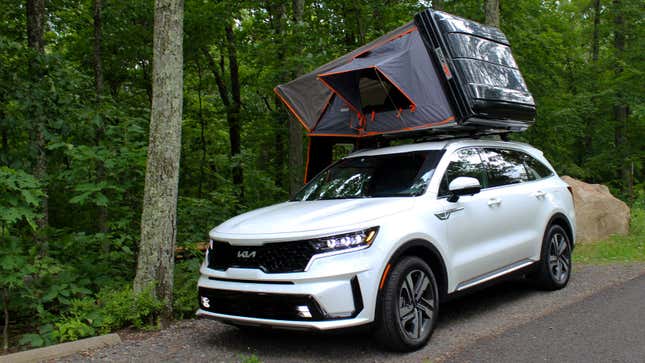
(Full Disclosure: Roofnest lent me one of its shiny Condor rooftop tents perched atop a pristine Kia Sorento for a long weekend trip to the mountains.)
What is the Roofnest Condor?
Simply put, it’s a collapsible tent that fits on the roof of your car. When you’re traveling, it looks just like an extra storage pod up top. But, when you stop and set up camp, it folds out to create a 60″ by 83″ rooftop paradise.
To bring about this transformation from inconspicuous box to the envy of other campers, its a super simple affair. There are a few straps to undo on one side, then you push up the clamshell top. Once this is all the way up, a quick pull on the attached ladder folds out the entire floor area and pops up the main body of the tent.

To finish your install, there are six poles to pop into place that stretch out the window shrouds and canopy over the tent’s entrance. All in all, it takes less than five minutes to get it set up, which, when we first arrived at camp in the pitch black while being attacked by all manner of flying beasts, was a godsend.
And that’s it, you’re ready to set up your sleeping bag and spend your first night under the stars. There’s even a built-in mattress up top, so all you have to do is unroll your sleeping bag and get comfy.
To access all this camping convenience, all you’ll need is a car with space for two crossbars that can be mounted at least 30 inches apart. Oh and money: $3,395 plus tax, to be precise. And that’s a lot for a tent, but it does bring with it a few features that your traditional camping gear can’t keep up with.

Why is the Roofnest better than a tent?
Let’s get the obvious advantage out the way first, the Roofnest Condor is infinitely easier to assemble than pretty much any traditional tent. On the first night, I managed to set it up basically blindfold, as turning on my head torch and attracted every moth in New York State.
After that, a few practice assemblies and take downs the next day meant I could confidently set it up and take it down in about three minutes each way. Not something you can say for a tent. Well, unless it’s a pop-up.
On top of that, the Roofnest trounces pop-up tents in the stability stakes. On my site, there was a particularly windy afternoon where other tents were blown away, but the Roofnest stood strong. And while it didn’t rain on my trip, being off the ground would make it much less likely that you’ll go home with all your gear caked in mud.
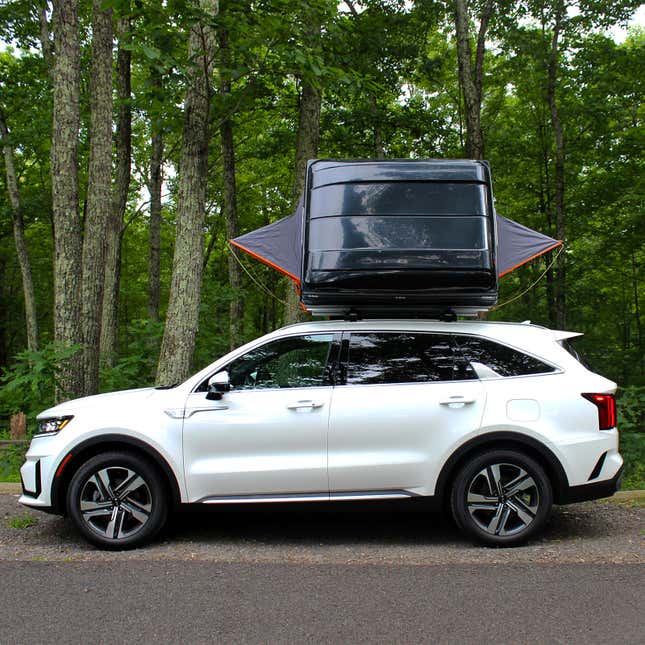
And while we’re talking about being off the ground, it was a lovely feeling climbing up into my rooftop den every night. It was like I was climbing into a tree house each evening, especially as we were surrounded by branches and leaves in our wild campsite.
Once you’re up there, you can also fully immerse yourself in the outside world by opening up the front door, two side windows and a skylight up top. It’s a lovely way to sit and watch the stars overhead, and meant that ventilation inside the tent is great.
On top of this, the built-in mattress is much comfier than any regular camping bed I’ve used in the past, and the included string of LED lights illuminate the inside to increase the feeling that you’re sleeping in a fairy den. I could definitely get used to this.
There are further creature comforts, too. Inside, you’ll find three pockets to store a smaller items, and there are two very useful external shelves that hang either side of the ladder to keep your shoes or boots out the tent.
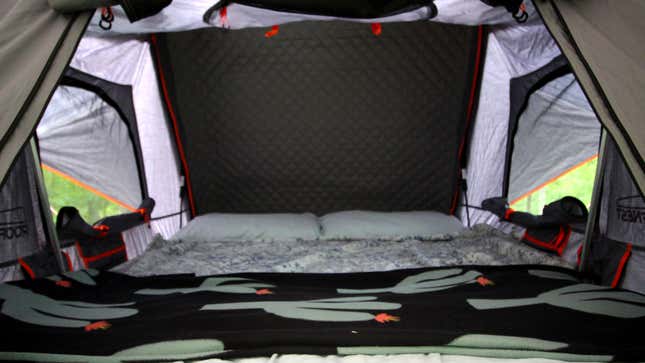
Roofnest also includes an external tent that you can set up at ground level. This, it says, can be used as a changing room or additional storage space if you need. But, during my test, I found that there was plenty of space inside the rooftop tent to get changed each morning, so didn’t really use this all that much.
Another pro of using a tent like this, if you’re in a smaller car, having the tent on your roof frees up trunk space. Sure, I had an enormous Kia Sorento to fill with camping gear, but I think a smaller car might really benefit from this setup.
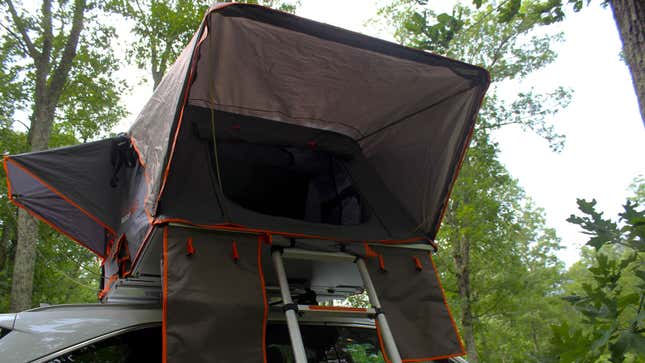
Does it Lack Anything Compared to a Normal Tent?
But, and I’m afraid there is a but, those glitzy features and extra conveniences don’t come without their disadvantages.
Let’s get the big one out the way first. It’s a bit annoying that you have to pack everything up any time you want to drive somewhere.
For my test trip, I was set up at the same spot on the same site for three nights, and had a few days hiking and climbing planned while we were there. This meant that on most mornings we had to pack away the tent so that we could hit the road and head for the hills.
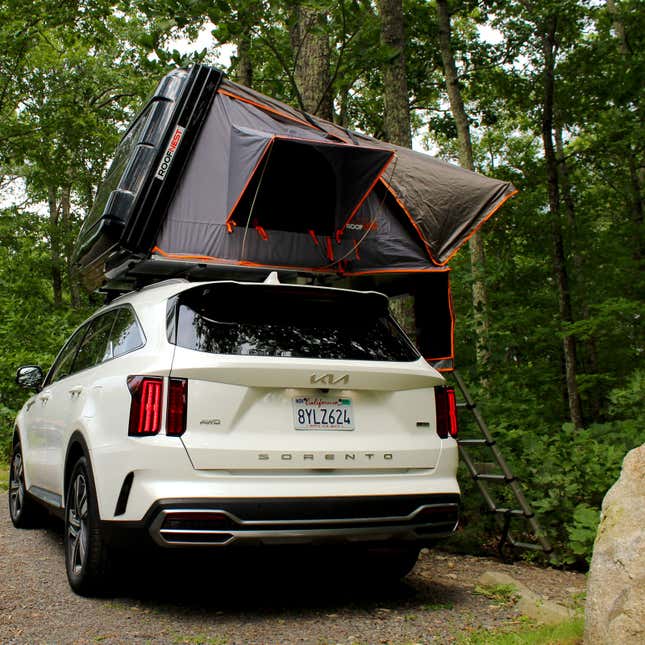
Each morning, I had to pack away our bedding and pass it down the ladder, because you can’t close the tent up with your sleeping supplies inside. Then, you have to fold the whole contraption up before heading back out on the road. And once back at camp, it was time to set it all up again.
Sure, if you’re heading out on a big overlanding adventure where you need a place to stay as you travel cross-country, this might not be an issue. I also don’t think it would be quite as grating if you’re going for a short camping trip, which the convenience of the Roofnest might inspire me to do more often. But, I still think being able to separate your tent from your vehicle is a nice option to have.
Then there are the details you have to consider when setting the tent up. Sure, a normal tent is susceptible to the undulation of the ground you’re sleeping on. But, thanks to its elevated position, the Roofnest feels even more sensitive. Any incline at ground level is exaggerated by your lofty position, so careful consideration of your camping spot is essential to a cozy sleep.
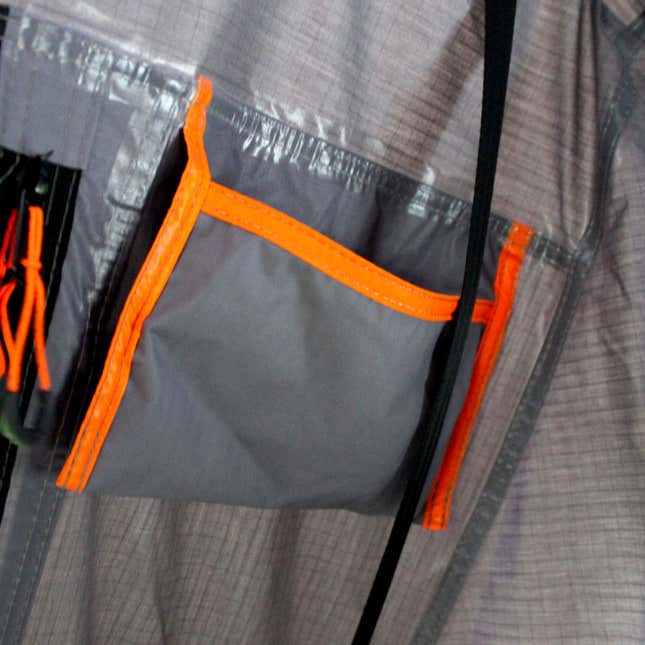
Also, once up you’re up there, every movement is exaggerated by the car’s suspension. You’re almost rocked to sleep as the springs try to absorb your tossing and turning in the summer heat. I quite liked this, but my camping partner was not a fan.
The final quirk I spotted was that it’s not really compatible with keyless entry. Each night, we’d lock all our belongings safely in the car, only for the Kia’s keyless entry system to unlock again when we made it to the tent. A quick lock of the doors from inside the tent was always undone by the car’s sensors, until we lost hope of it staying shut and left it minding its own business locking and unlocking all night long.
Sure, (probably) nobody is going to steal a car with a tent on its roof and a ladder hanging off the side, but this is America.
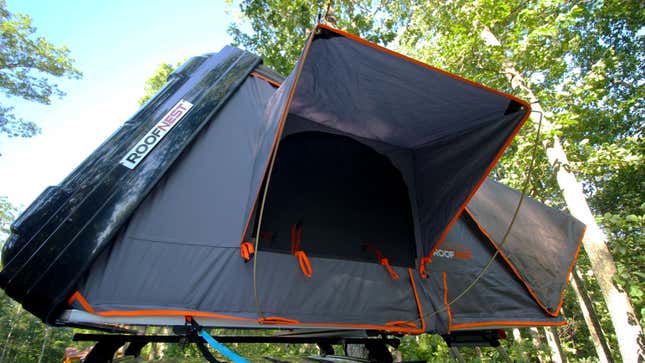
OK, but can You see Past That?
Honestly, I’m not sure. If those niggles don’t sound like dealbreakers and you want something that you can take on long roadtrips or short excursions into the wilderness, then the Roofenst Condor is wonderful. I can also see it being great for race weekends or music festivals, where you aren’t going to need to move your car while you’re there.
It’s expensive, but lovely. I’m a big fan of the tent’s design, build, and the ease with which it can be set up. It also packs in some great features, like the external shelves and extra windows, that are excellent for any camping trip. It really does feel like an ingenious little creation.
But, for more than $3,000, it feels like there are too many functionality flaws for me to consider investing in one. For far less money, you could get an excellent ground-dwelling tent that would take longer to set up, but would stay assembled for however long your trip was.
If you want to go for a super simple setup process, then you can even get all manner of inflatable or pop-up tents for a fraction of the price of the Condor. And, if you already own a van, you could do a lot of RV conversion for that kind of money.

I really wanted to like the Roofnest Condor going into this trip. I buy into that vision of a simpler way to make camping convenient, and I appreciate that products like this straddle the gap between investing in a full-blown RV or sticking to the confines of a traditional tent.
But, while the Condor comes with a few advantages of each, it drags with it its own niggles that either alternative would avoid.